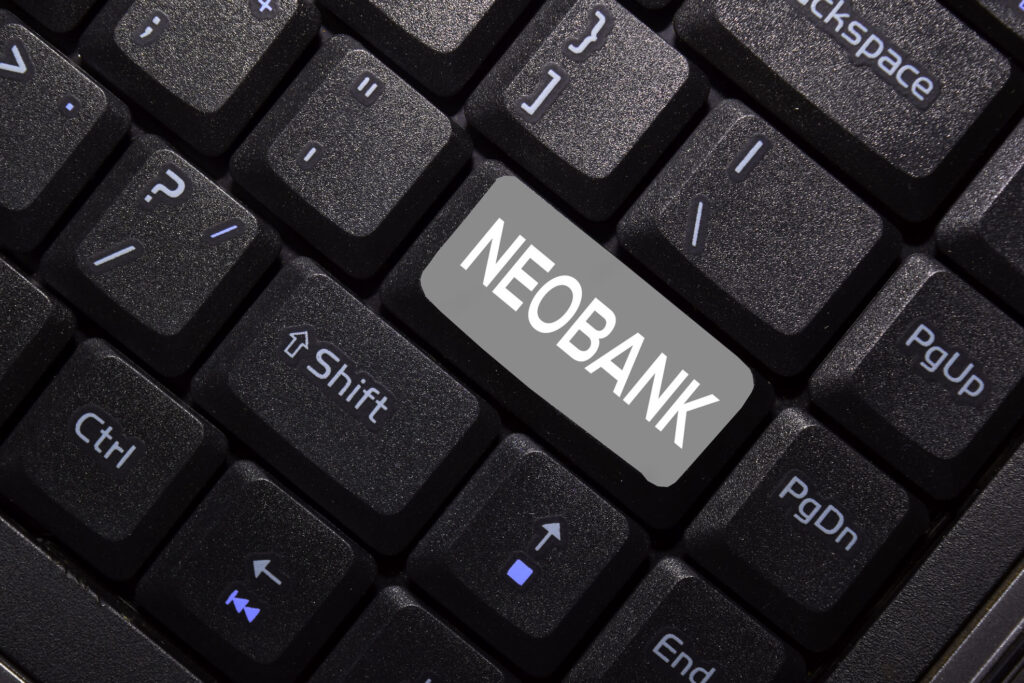Best Credit Card Processing Solutions Tailored for Every Industry

By admin May 1, 2024
In the landscape of modern banking, neobank has emerged as a beacon of innovation and customer-centricity, challenging the traditional banking sector with their digital-first approach. These fintech-powered entities offer a refreshing alternative to traditional banks, providing a streamlined, tech-driven banking experience that caters to the demands of today’s digital-savvy consumers. This article delves into the essence of neobanks, exploring their operations, benefits, and considerations to help you determine if they align with your financial needs.
What is a Neobank?
Neobank is essentially technology companies that provide banking services through digital platforms without operating physical branches. These entities, also known as challenger banks, especially in regions like the UK, arose from the need to offer more agile and customer-friendly banking solutions compared to the often rigid and feel-heavy traditional banks. By specializing in mobile and online banking, neobanks offer services such as checking and savings accounts, streamlined money transfers, and innovative financial management tools.
The Rise of Neobanks
The concept of neobanks gained traction following the 2007-2009 financial crisis, with companies aiming to restore trust and enhance convenience in the banking sector. Today, renowned U.S. neobanks like Chime have amassed millions of users by offering fee-free services and features like early direct deposit and automatic savings plans. Internationally, neobanks such as Revolut, N26, and NuBank have made significant inroads in their respective markets, revolutionizing how consumers interact with their finances.
Neobanks vs. Online Banks: Key Differences and Similarities

Neobanks and online banks are modern financial entities that operate primarily over the internet, offering alternatives to traditional brick-and-mortar banks. While they share some similarities, such as digital-first approaches, there are distinct differences in their structures, services, and customer engagement strategies. Here’s a detailed exploration of neobanks and online banks, highlighting their key differences and similarities.
Similarities Between Neobanks and Online Banks
- Digital Operations: Both neobanks and online banks operate predominantly online. They offer banking services through websites and mobile apps, allowing customers to perform transactions such as transfers, deposits, and bill payments digitally, without needing to visit physical branches.
- Enhanced User Experience: A significant focus for both types of banks is providing a seamless and user-friendly experience. This is often achieved through intuitive interfaces, quick account setup, and real-time notifications about account activities.
- Lower Fees: Compared to traditional banks, both neobanks and online banks typically have lower overhead costs, which allows them to offer services with lower fees. This includes reduced charges for account maintenance, overdrafts, and foreign transactions.
- Innovation and Technology: They leverage the latest technologies including AI, machine learning, and blockchain to enhance their offerings and improve customer service. This might include personalized financial advice, automated savings plans, and enhanced security measures.
Differences Between Neobanks and Online Banks
- Regulatory Status: One of the most significant differences lies in their regulatory status. Online banks are usually just the digital arms of traditional banks and thus possess a full banking license. Neobanks, on the other hand, may operate under a lighter regulatory framework and often partner with traditional banks to offer their services, as many do not hold a banking license themselves.
- Business Model: Neobanks tend to focus on specific customer segments or niche markets, offering specialized services that appeal to tech-savvy individuals, freelancers, or small business owners. Online banks, while also targeting a broad audience, typically offer a more comprehensive range of banking services that cater to a wider demographic.
- Product Offerings: While online banks offer a full suite of banking products similar to their traditional counterparts—including savings accounts, loans, and credit cards—neobanks often start with fewer product offerings. Many neobanks begin with checking accounts or payment services and gradually expand their product lines.
- Customer Interaction: Neobanks frequently utilize advanced technologies to interact with customers, such as chatbots and AI-driven support systems. Online banks, while also utilizing technology, may still maintain some elements of traditional customer service models, including phone support.
Evaluating the Popularity and Viability of Neobanks
Neobanks have experienced rapid growth, supported by significant venture capital investment. For instance, Chime reached a valuation of $14.5 billion after a series of funding rounds, highlighting the strong investor confidence in the neobank model. However, the sustainability of neobanks is not without challenges, as seen with entities like Xinja and Simple, which either ceased operations or were absorbed by larger institutions amid financial difficulties.
Pros of Neobank
The primary advantages of neobanks include:
- Lower Fees: They offer minimal to no fees on regular transactions and monthly account maintenance, a direct benefit of their lower operational costs.
- Higher Interest Rates: Savings accounts in neobanks often attract higher interest rates compared to traditional banks.
- Convenience: With mobile-first strategies, neobanks provide a seamless digital experience for routine banking tasks like deposits, transfers, and bill payments.
Drawbacks of Neobank
However, there are several considerations before switching to a neobank:
- Limited Financial Products: They typically focus on basic banking services, often not offering loans or mortgages.
- Lack of Physical Branches: This could be a drawback for those who prefer face-to-face interactions for their banking needs.
- Dependency on Digital Platforms: Customers must be comfortable managing their finances exclusively through mobile apps or websites.
Making an Informed Decision
For prospective customers, choosing a neobank comes down to personal preference and financial needs. It is crucial to verify that the neobank is insured by relevant bodies like the FDIC in the U.S., ensuring the safety of your deposits. Additionally, understanding the available features, fee structure, and customer service options will help in making a well-informed decision.
The Popular Neobanks You Should Know

Neobanks, or challenger banks, have significantly transformed the banking landscape by introducing innovative and user-friendly solutions. These online-only banks are capturing attention globally, challenging traditional banking norms and enhancing customer experiences. In this article, we explore prominent neobanks from various regions, including North America, Asia, Europe, Oceania, Africa, and South America, with a special focus on North American entities like Chime, Varo, Current, and Aspiration. Discover some of the top neobanks currently shaping the financial world.
Chime
Chime leads the U.S. neobank market with over 12 million users. Known for its user-friendly approach, Chime eliminates many traditional banking fees and offers credit-building opportunities. It also provides features such as early access to direct deposits and high-yield automatic savings accounts. While Chime operates as a fintech company, it partners with The Bancorp Bank and Stride Bank, N.A., for banking services and debit card issuance, both members of FDIC.
Varo Bank
Initially a neobank, Varo Bank transitioned to a fully licensed bank after receiving a national banking charter from the Office of the Comptroller of the Currency (OCC) in 2020. It serves roughly 2 million users, offering features like zero monthly or overdraft fees and no minimum balance requirements. Additionally, Varo does not require a credit check for opening an account.
Current
Current has rapidly grown in popularity in the U.S., attracting hundreds of thousands of users with its appealing offers such as prompt access to direct deposits, no-fee overdraft options, and cash back on debit card purchases.
Global Challenger Banks
In the U.K., notable challenger banks like Revolut, Starling, and Metro Bank have made significant inroads. Revolut, in particular, has expanded into the U.S. market. Other notable international players include N26 in Germany and NuBank in Brazil, both of which have disrupted traditional banking in their respective markets.
By embracing technology and customer-centric services, these neobanks are not just competing with traditional banks but are setting new standards for the banking industry worldwide.
How Does Neobank Make Money?
Neobanks have been reshaping the landscape of the banking industry with their innovative approaches and digital-first strategies. Unlike traditional banks, neobanks operate primarily online without physical branches, leveraging technology to offer streamlined and user-friendly banking services. As the global neobanking market is projected to reach a staggering $333.4 billion by 2026, understanding how these digital banks stay profitable is crucial.
Key Revenue Streams for Neobanks
Interchange Fees
One of the primary sources of income for neobanks is interchange fees. These are fees paid by merchants to banks when customers make purchases using bank-issued cards. For instance, Chime, a leading neobank in the United States with approximately 12 million users, issues a Visa debit card to its customers. Every time a purchase is made using this card, Visa charges a fee, a portion of which is then paid to Chime. This system is similar for other neobanks across various regions, making interchange fees a significant revenue stream.
Credit Services
Another vital aspect of neobanks’ profitability is their credit offerings. Neobanks like Nubank in Brazil, which serves over 40 million customers, provide credit card services and charge fees on transactions. Additionally, they earn revenue from interest on overdrawn credit balances, making credit services a robust profit center.
Interest on Deposits and Savings
Neobanks also benefit financially from the interest accrued on customer deposits. By offering competitive interest rates on savings accounts and other deposit products, they can attract substantial capital, which can then be reinvested or loaned, generating further income.
ATM and Additional Service Fees
Revenue is also generated from fees associated with automated teller machine (ATM) usage and other banking services. While many neobanks promote fee-free or low-fee structures to attract users, certain services might still carry fees, contributing to their overall revenue.
Neobank Business Models Explained
To remain competitive, neobanks employ various business models, each tailored to leverage different aspects of digital banking:
Ecosystem-Led Model
This model focuses on creating a network of interconnected financial services through APIs. It allows for seamless integration and communication between various financial platforms, enhancing user experience and operational efficiency.
Interchange-Led Model
In this model, neobanks earn from transaction fees incurred during card payments. Neobanks like Chime and Neon in Brazil exemplify this model by earning from fees paid by Visa during transactions.
Credit-Led Model
Centered on credit card services, this model helps neobanks profit from transaction fees and the interest from carried balances. Nubank utilizes this model effectively, capitalizing on its large customer base.
Asset-Led Business Model
This approach involves offering high-yield savings accounts and certificates of deposit. Neobanks such as Marcus by Goldman Sachs attract customers with high interest rates on these products, differentiating themselves by specializing in niche financial services.
Product Extension-Focused Approach
Different from the ecosystem model, this approach involves expanding the range of financial products offered. For example, Robinhood has introduced Robinhood Gold, which provides advanced market analysis for a subscription fee, thereby broadening its revenue streams and enhancing its market position.
Choosing the Right Neobank for You
In today’s rapidly evolving financial landscape, neobanks are gaining popularity due to their innovative services and user-friendly platforms. Neobanks, or digital banks, operate exclusively online without traditional physical branches, offering modern banking solutions tailored to tech-savvy consumers. If you’re considering switching to a neobank or starting your financial journey with one, here are key factors to consider to ensure you choose the right neobank that fits your needs.
Understanding Your Financial Needs
Before choosing a neobank, it’s crucial to assess your financial habits and needs. Are you a frequent traveler who could benefit from a neobank with low international transaction fees? Or perhaps you’re looking for better savings rates or a user-friendly app for daily financial management? Identifying what you value most in your banking experience will guide your decision.
Comparing Fee Structures
One of the significant advantages of neobanks is their fee structure. Many neobanks offer lower fees compared to traditional banks because they don’t have the same overhead costs. However, fee structures can vary widely between different neobanks. Some may offer zero fees for standard operations but charge for things like ATM withdrawals or foreign transactions. Ensure you understand the fee structure of each neobank to avoid unexpected charges.
Examining Security Measures
Security is a paramount concern when it comes to banking. Neobanks generally offer advanced security features, including two-factor authentication, real-time alerts, and the ability to freeze your card through an app instantly. It’s important to research what security measures each neobank uses to protect your money and personal information.
Evaluating Customer Support
The lack of physical branches means you’ll rely on digital communication channels for customer service. Check how each neobank handles customer support—whether through live chat, email, or phone—and their service hours. Read reviews to see other users’ experiences with the bank’s responsiveness and support quality.
Reviewing Product Offerings
Different neobanks may specialize in various financial products. Some might offer competitive interest rates on savings accounts, others might focus on investment products, and some could provide comprehensive budgeting tools. Consider which features align best with your financial goals. For instance, if you’re interested in building your savings, look for a neobank that offers high-yield savings accounts.
Checking Tech Compatibility
Since neobanks are app-based, ensure that their app is compatible with your device and check its functionality. A well-designed app should be intuitive and provide a comprehensive overview of your finances, easy transaction capabilities, and detailed insights into your spending patterns.
Reading Reviews and Feedback
Lastly, it’s beneficial to read reviews and gather feedback from current customers. Their experiences can provide insights into the reliability and user-friendliness of the neobank’s services. Look for comments about their app performance, customer service experiences, and the overall satisfaction with the product offerings.
FAQ’s
Q.1: Are Neobanks regulated like traditional banks?
Answer: Neobanks are subject to regulatory oversight, but the specifics can vary by country. In many regions, neobanks operate under the same financial authorities that regulate traditional banks, ensuring they adhere to similar financial safety and consumer protection standards. However, some neobanks might operate under less stringent regulations if they don’t offer all the services traditional banks do.
Q.2: How do Neobanks make money if they charge lower fees?
Answer: Neobanks often reduce operational costs by not maintaining physical branches and by leveraging technology, which allows them to charge lower fees. They make money through other means such as interchange fees from debit card transactions, interest on loans, investment products, premium account features, and partnerships with other financial service providers.
Q.3: What happens if a neobank goes out of business?
Answer: If a neobank goes out of business, the impact on customers depends on the regulatory protections in place, such as deposit insurance schemes. In many countries, customers’ funds are protected up to a certain limit by government-backed insurance if the bank fails. It’s important for customers to verify what protections are applicable to their deposits at neobanks.
Q.4: Can I trust a neobank with my salary and savings?
Answer: Many neobanks are considered safe for handling salaries and savings, especially those that are fully licensed and regulated. Customers should check whether the neobank is insured by a national deposit insurance scheme and look into its financial health and reviews to gauge its reliability.
Conclusion
Neobanks are reshaping the banking landscape with their digital-first approach and innovative features. They offer convenient and user-friendly banking experiences, often at lower costs compared to traditional banks. While neobanks have their advantages, it is important for users to consider their individual banking needs and preferences. Neobanks may be a suitable choice for tech-savvy individuals who prioritize convenience and digital features, but those who require physical branches or specialized financial products may prefer traditional banks. As the neobank industry continues to evolve, it is crucial for users to stay informed about the latest developments and choose the banking solution that best aligns with their financial goals and preferences.
